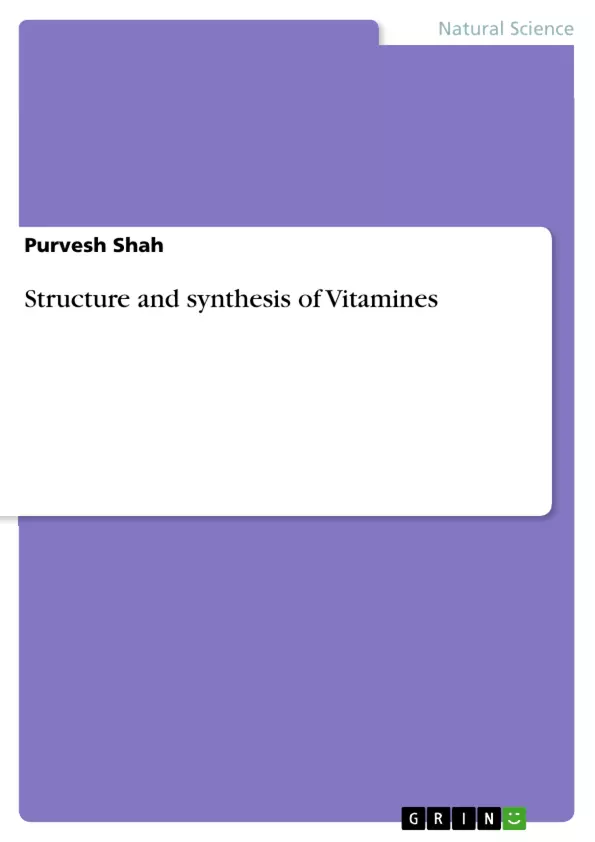Here we discuss the structure and synthesis of various Vitamins.
Vitamin A influences growth in animals, and also apparently increases resistance to disease. Night blindness is due to vitamin A deficiency in the human diet, and a prolonged deficiency leads to hardening of the cornea, etc. Vitamin A occurs free and as esters in fats, in fish livers and in blood. It was originally isolated as viscous yellow oil, but later it was obtained as a crystalline solid, m.p. 63-64°C.
Table of Contents
- Vitamin A
- Vitamin B6
- Vitamin H
- Bios
- β-Biotin
- Structure of Biotin
- Vitamin B1
- Vitamin C
Objectives and Key Themes
This book aims to provide a comprehensive overview of the structure and synthesis of vitamins, particularly focusing on their chemical properties and biological roles. It explores the historical development of vitamin research and the process of identifying and elucidating the structures of these essential compounds. The book further dives into the methods used for the synthesis of these vitamins, highlighting the importance of these techniques in understanding and producing these crucial nutrients.
- Structure and Properties of Vitamins
- Historical Development of Vitamin Research
- Chemical Synthesis of Vitamins
- Biological Significance of Vitamins
- Applications and Importance of Vitamin Synthesis
Chapter Summaries
- Vitamin A: This chapter covers the structure, properties, and synthesis of vitamin A, highlighting its role in animal growth, resistance to disease, and the prevention of night blindness. The chapter discusses the various chemical reactions and transformations involved in the identification and synthesis of vitamin A.
- Vitamin B6: This chapter delves into the structure and synthesis of vitamin B6, also known as pyridoxin. It explores the chemical properties of pyridoxin, including its behavior as a weak base and the presence of hydroxyl groups. The chapter details the experimental procedures used to determine the structure of pyridoxin, including oxidation reactions and spectral analysis.
- Vitamin H: This chapter provides a comprehensive overview of vitamin H, also known as biotin. It explores the historical discovery of biotin, its biological roles, and the determination of its structure. The chapter highlights the different chemical reactions and transformations involved in elucidating the structure of biotin, including hydrolysis, oxidation, and condensation reactions.
- Vitamin B1: This chapter focuses on the structure and synthesis of vitamin B1, also known as thiamine. It discusses the role of thiamine in preventing beriberi and the identification of its chemical components. The chapter details the chemical reactions used to decompose thiamine into its constituent fragments and analyze their properties. This chapter also includes the process of synthesizing thiamine based on the identified fragments.
Keywords
This work centers on the study of vitamins, focusing on their structural determination, chemical properties, and synthesis. Key themes include the historical development of vitamin research, chemical reactions and transformations, and the identification and isolation of vitamins from various sources. The book also emphasizes the biological importance of vitamins in human health and the application of synthetic techniques in understanding and producing these essential nutrients.
- Citar trabajo
- Purvesh Shah (Autor), 2014, Structure and synthesis of Vitamines, Múnich, GRIN Verlag, https://www.grin.com/document/270253



